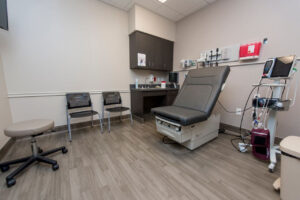
Words minor emergency seem like an oxymoron. What is small concerning an emergency? The changing extent has demanded this term of medical care facilities. Health centers are no more the only locations you can go to get a continuous look after an immediate wellness issue. Free-standing ERs, as well as immediate care facilities, such as emergency clinic San Antonio, are appearing all over, providing an option to off-hour hospital visits. Immediate treatment centers are just furnished to handle what is called a minor emergency. So, what is a small emergency? It is a serious injury or illness that needs prompt focus but is not always life-threatening.
Harmful vs. Urgent
Can you think about a disorder that is immediate, however, not life-threatening? Harmful illness, as well as injuries calling for an Emergency Room versus an immediate treatment center, consist of the following:
- Radiating chest discomfort, such as that with a heart attack.
- A modified frame of mind or loss of consciousness.
- Sudden serious headache, which might be an aneurysm or stroke.
- Serious stomach discomfort on the right-hand side of appendicitis.
- Problem breathing.
- A newborn with a fever or injury.
- Significant burns.
Every one of the above signs and symptoms can lead to a lethal condition. That is the time an emergency would be necessary. None of these are thought about minor emergencies.
When Do You Go to an Urgent Care Over ER?
Immediate treatment can be used for small emergencies, especially when you cannot get into your family doctor. This will be if appointments are complete, on the weekend breaks or after hours. If a health problem gets worse as well as creates a high fever that will not go down or an injury takes place that triggers minimal activity or minor-to-modest hemorrhaging, those can be handled at an urgent care center. A few cases appropriate for urgent care facilities include:
- Serious sore or inflamed throat.
- Bronchial asthma strikes.
- Severe belly symptoms.
- High-temperature and/or flu signs and symptoms.
- Strains, as well as minor cracks.
- Bleeding and cuts, mild or moderate.
- Neck and back pain as well as muscle pain with unexplained causes.
- Injuries from minor falls.



